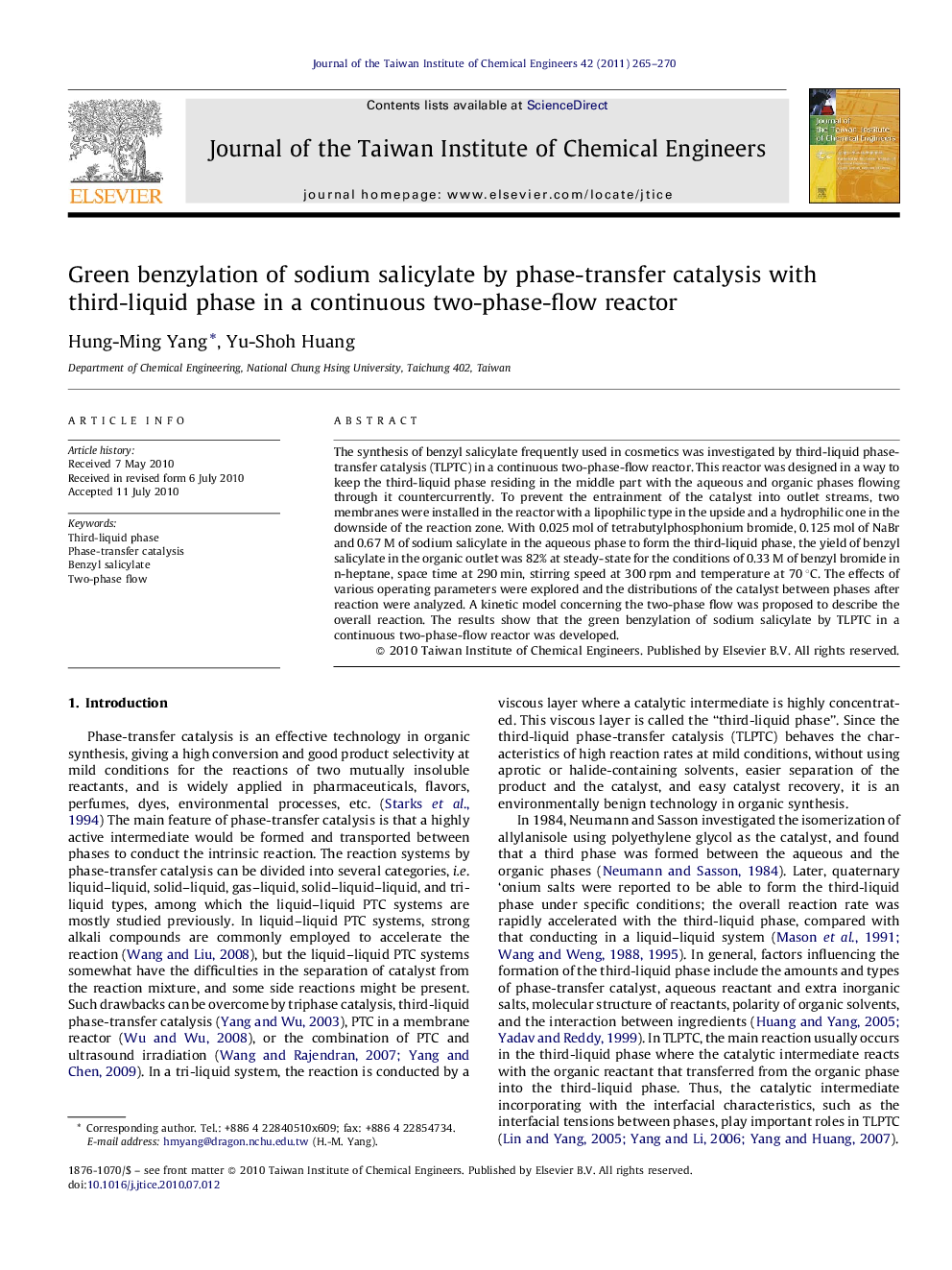| Article ID | Journal | Published Year | Pages | File Type |
|---|---|---|---|---|
| 691718 | Journal of the Taiwan Institute of Chemical Engineers | 2011 | 6 Pages |
Abstract
The synthesis of benzyl salicylate frequently used in cosmetics was investigated by third-liquid phase-transfer catalysis (TLPTC) in a continuous two-phase-flow reactor. This reactor was designed in a way to keep the third-liquid phase residing in the middle part with the aqueous and organic phases flowing through it countercurrently. To prevent the entrainment of the catalyst into outlet streams, two membranes were installed in the reactor with a lipophilic type in the upside and a hydrophilic one in the downside of the reaction zone. With 0.025 mol of tetrabutylphosphonium bromide, 0.125 mol of NaBr and 0.67 M of sodium salicylate in the aqueous phase to form the third-liquid phase, the yield of benzyl salicylate in the organic outlet was 82% at steady-state for the conditions of 0.33 M of benzyl bromide in n-heptane, space time at 290 min, stirring speed at 300 rpm and temperature at 70 °C. The effects of various operating parameters were explored and the distributions of the catalyst between phases after reaction were analyzed. A kinetic model concerning the two-phase flow was proposed to describe the overall reaction. The results show that the green benzylation of sodium salicylate by TLPTC in a continuous two-phase-flow reactor was developed.
Related Topics
Physical Sciences and Engineering
Chemical Engineering
Process Chemistry and Technology
Authors
Hung-Ming Yang, Yu-Shoh Huang,
